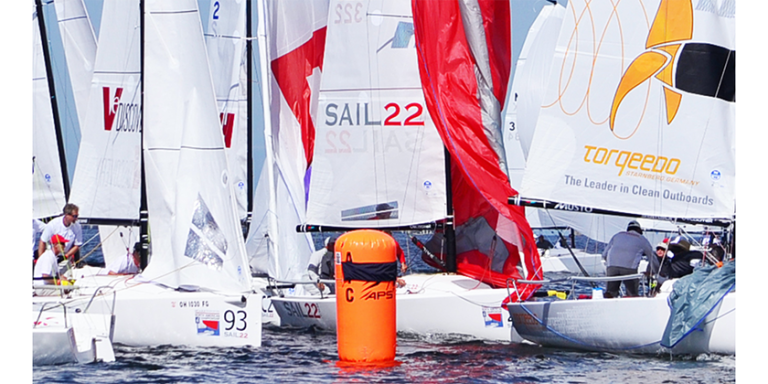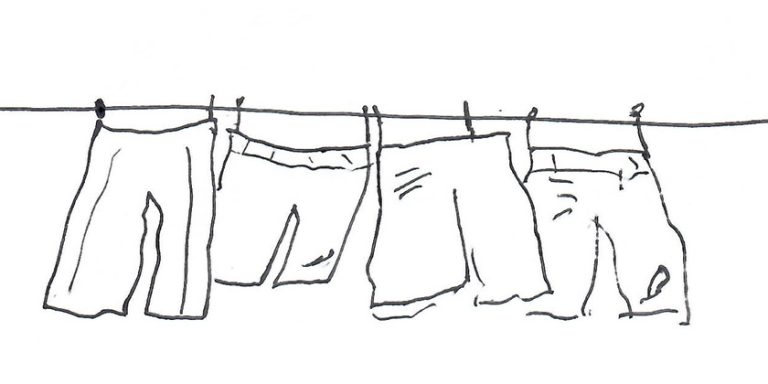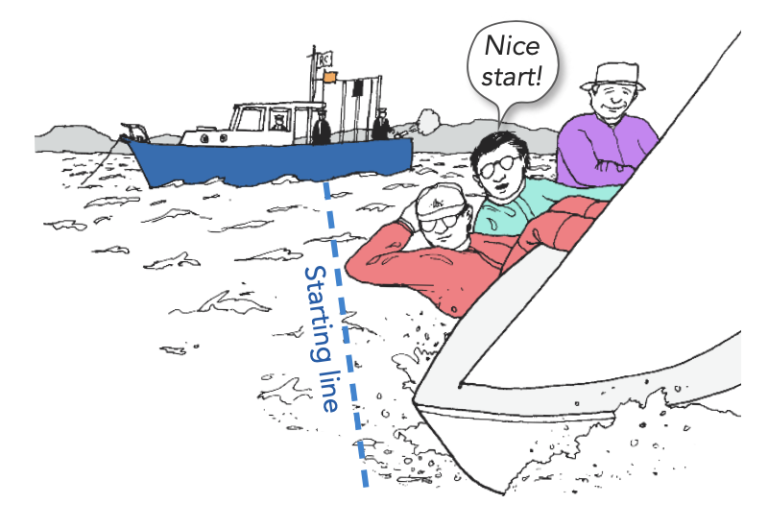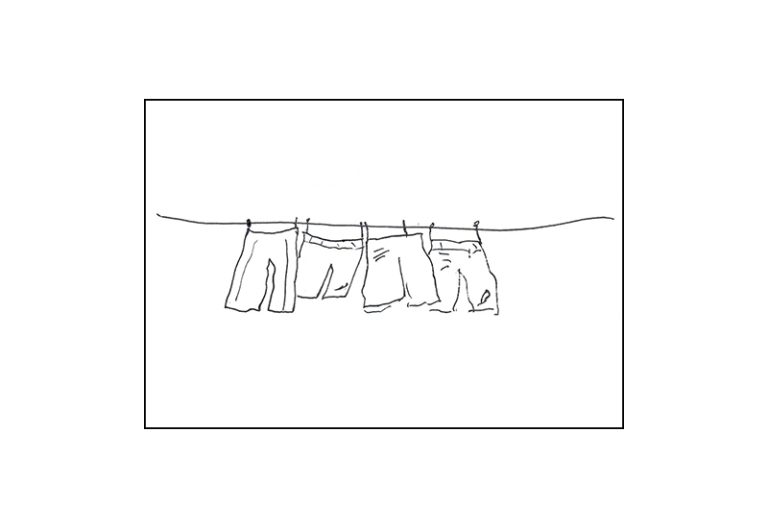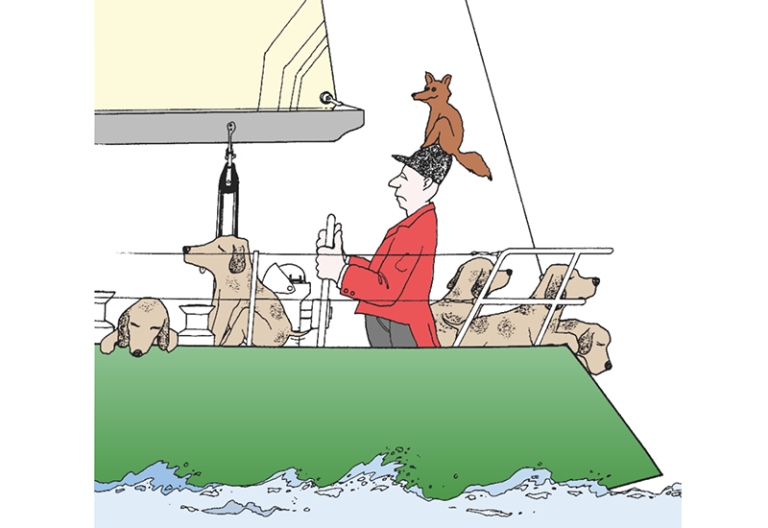Speed & Smarts: Light and Heavy Air Differences – Part 3: Boathandling Maneuvers in Light Air vs. Heavy Air
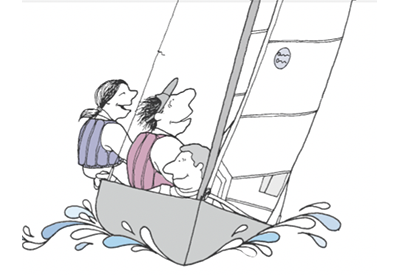
August 17, 2022
One of the big differences between racing in light air versus heavy air is that it’s usually a lot more difficult to execute good boathandling maneuvers when it’s breezy. This is not surprising. More wind means boats go faster and bounce around a lot more (because there are usually bigger waves).
More wind also creates a lot of noise and loads up the sheets we trim. Almost everything is more challenging in heavy air, so sailors need to focus on several things:
Preparation – You can often make a good jibe in light air without much practice but trying this in a breeze is risky. So, practice in wind and make sure crew members understand their roles in maneuvers.
Communication – Talk more in heavy air because things happen quickly and you need to get the entire team on the same page. Talk louder because it’s hard to hear over the noise of wind and waves.
Anticipation – Higher speeds in heavy air mean boats converge very quickly with other boats and marks. Keep looking ahead to avoid surprises.
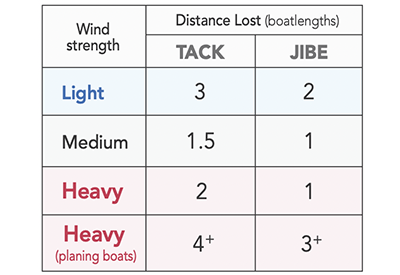 Think before you tack or jibe
Think before you tack or jibe
When you’re considering a tack or jibe, think about whether the amount you’ll gain strategically or tactically will be greater than the cost of the maneuver itself. Here is a very rough ‘Distance Lost’ chart (for a generic middle-sized boat) that shows several things. First, the cost of these maneuvers is least in moderate winds and greatest in light or heavy air. It might be worth tacking on a small header when you are racing in 10 knots of wind, for example, but not in 6 or 16 knots (unless your boat roll tacks really well).
Second, tacking and jibing are most costly for boats that are planing in heavy air like skiffs, cats and boats with asymmetrical chutes. When a boat has to come off a plane to change tacks, she loses a lot to boats that keep planing. For these boats, tacking or jibing is not worthwhile unless there’s a very good reason.
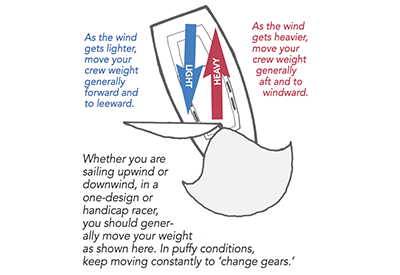 Position your weight according to the wind velocity
Position your weight according to the wind velocity
The wind velocity has a big influence on the ideal location of crew weight during beats and runs. In most cases you should move to windward when it’s windy and to leeward when it’s light. This is largely a matter of controlling heel angle and therefore helm (see above). If the boat is too flat in light air, you won’t have much helm at all and it will be hard to stay in the groove. That’s a good reason to move weight to leeward. If the boat heels too much in breeze you’ll have too much helm and rudder drag. That’s why you move to windward and hike!
Similar reasoning applies to fore-and-aft weight placement. Moving crew weight forward puts more of the boat’s rounded bow section in the water and raises some of the flatter stern out of the water. This is good in light air because it increases windward helm and reduces wetted surface. But in heavy air it makes the bow plow. When it’s windy, moving aft reduces helm and allows the boat to sail fast on its flatter stern sections.
Moving crew around for different wind velocities is obviously important for small, lightweight boats that are affected most by weight placement, but it will make a difference on any size boat.
 HEAVY AIR: Use sail trim for turning
HEAVY AIR: Use sail trim for turning
In heavy air, it’s difficult to adjust the boat’s heel angle by moving crew weight back and forth. With so much pressure in the sails, weight placement often has very little effect on turning. Therefore, you have to rely on the trim of your sails (and your rudder).
Adjusting sail trim when it’s breezy is not only helpful for turning the boat, it’s essential! If you have ever tried bearing off around the first mark on a windy day without easing your mainsheet, you know how much effect the sails have on your ability to turn.
Basically, when you want to bear off, ease your main and trim your jib (see above). To head up, do exactly the opposite – trim the mainsheet and ease the jib.
When it’s windy, trimming the sails makes the boat heel over a lot. This creates windward helm which is helpful when you want to head up. But if you’re trying to bear off, you need to reduce helm by reducing heel. When you have a lot of breeze, you may actually need to ease the jib (as well as the main) to turn the boat.
LIGHT AIR: Use crew weight for turning
There are basically three ways to make your boat turn right or left. You can use your rudder, your sails, or the placement of your crew weight. The rudder is usually most effective and easiest, but turning it creates drag and therefore is not good for speed, so you should use the other two methods as much as possible.
In light air, adjusting your sail trim is not an effective way to turn your boat because there’s not enough wind pressure in the sails. But since the wind is not pushing too hard on the sails, it’s easier to change the heel of the boat by moving crew weight from side to side. So, when there’s not much wind, focus on this technique (i.e. moving your weight to the starboard side to turn the boat to port, and vice versa).
This technique works especially well on smaller or lighter boats where crew weight is a significant part of the boat’s overall displacement. Even on heavier keel- boats moving your crew can help a lot in light air.
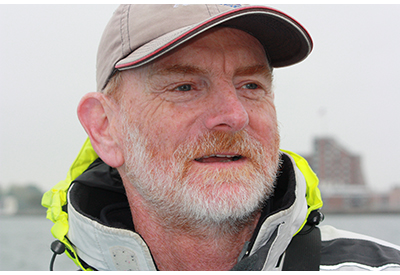 Dave Dellenbaugh is the publisher, editor and author of Speed & Smarts, the racing newsletter. He was the tactician and starting helmsman on America3 during her successful defense of the America’s Cup in 1992 and sailed in three other America’s Cup campaigns from 1986 to 2007. David is also two-time winner of the Canada’s Cup, a Lightning world champion, two-time Congressional Cup winner, seven-time Thistle national champion, three-time Prince of Wales U.S. match racing champion and past winner of the U.S. Team Racing Championship for the Hinman Trophy. He is currently a member of the US Sailing Racing Rules Committee (and was its chairman from 2005-2008).
Dave Dellenbaugh is the publisher, editor and author of Speed & Smarts, the racing newsletter. He was the tactician and starting helmsman on America3 during her successful defense of the America’s Cup in 1992 and sailed in three other America’s Cup campaigns from 1986 to 2007. David is also two-time winner of the Canada’s Cup, a Lightning world champion, two-time Congressional Cup winner, seven-time Thistle national champion, three-time Prince of Wales U.S. match racing champion and past winner of the U.S. Team Racing Championship for the Hinman Trophy. He is currently a member of the US Sailing Racing Rules Committee (and was its chairman from 2005-2008).
You can subscribe to the Speed & Smarts newsletter HERE.

